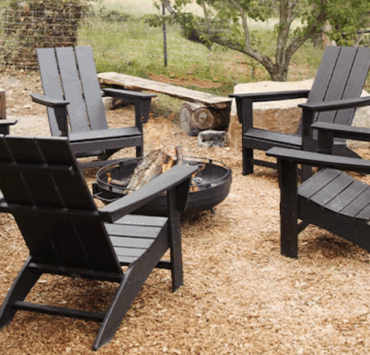Heading into the 2025 outdoor selling season, which typically peaks between March and Memorial Day, casual retailers weren’t sure what to expect. While 2024 ended with inflation finally beginning to abate and optimism that the economy would improve, the threat of tariffs hung in the air as President Donald Trump took the oath of office in January, making consumers skittish about spending, particularly on nonessentials.
“Not to sound like a broken record, but I don’t think we had any idea what to expect with so much uncertainty on tariffs and the economy,” said Brad Schweig, vice president of operations, Sunnyland Outdoor Living. “And with the current state of the situation, I still don’t know what is around the corner.”
Schweig said Sunnyland’s sales in March were flat, slightly up in April, but overall down for the year. The Dallas-based outdoor stalwart wasn’t alone in unexpectedly lower sales this season. Multiple independent casual retailers commenting anonymously told us that sales were flat at best, and down at worst.
“I think the year overall was flat,” one West Coast retailer reported. Multiple retailers shared that foot traffic was down this spring, attributing some of that reduction to weather woes as well as consumer concerns over the constantly changing tariff situation.
“We started off with solid sales in the outdoor category in February, and by all appearances, our estimates looked very strong for the upcoming season, but ultimately March and April sales did not meet projections,” said Scott Horvath, president, O’Malia’s Living in Carmel, Indiana. “Like many, we were hopeful for a good year, but the consumer has seemed to pull back. Foot traffic is down, estimates are down. We suspect the consumer is worried about overall financial health and/or confused from the whiplash of conflicting economic numbers and news.”
Independent retailers aren’t the only ones who’ve been affected. Earlier this week, Macy’s cut its full-year profit forecast and downgraded its expectations for adjusted earnings per share, attributing the decline in part to tariffs. And Lowe’s and Home Depot both reported reduced Q1 earnings, blamed on adverse weather and economic uncertainty, as well as a slowdown in home building over the past year.
The Trump administration followed through on its threat to penalize imports by enacting sweeping tariffs in early April on goods from around the globe. China, with whom Trump has engaged in a trade war since his first administration, was particularly targeted, with tariffs on goods imported from there soaring to an astronomical 145%.
The Conference Board’s Consumer Confidence Index, which measures consumer sentiment about the U.S. economy, dropped 7.9 points in April, the fifth consecutive month of declines. And the Expectations Index — which is based on consumers’ short-term outlook for income, business and labor market conditions — dropped 12.5 points in April, the biggest decline in 13 years.
“Consumer confidence declined for a fifth consecutive month in April, falling to levels not seen since the onset of the Covid pandemic,” said Stephanie Guichard, senior economist, Global Indicators at The Conference Board. “The decline was largely driven by consumers’ expectations. The three expectation components — business conditions, employment prospects and future income — all deteriorated sharply, reflecting pervasive pessimism about the future.”
The Conference Board found that April’s fall in consumer confidence was sharpest among consumers between ages 35 and 55 years old and those with household incomes of more than $125,000 per year.
Since then, the Trump administration has placed 90-day reprieves on tariffs on the European Union (dropping from a 50% duty to the across-the-board 10% on imports) and China (reducing the duty to 30%), which have inflated the stock market and spurred a bump in consumer confidence, with the Conference Board reporting the index increased by 12.3 points in May.
But those respites have simply prolonged the uncertainty for many, and their deadlines — July for the EU and other countries, and August for China — fall right in the middle of the casual market season, when retailers must make decisions about how much product to buy for the coming year.
“We originally planned to go to July market,” Schweig said. “With the July 9 tariff deadline leaving uncertainty on pricing, the lack of urgency to get orders in early, and based on current inventory levels, we are most likely skipping July now and waiting until September with the hopes we can make better and more-informed decisions then.”
But Schweig and others may reconsider that decision after the latest development in the tariff saga.
On Wednesday, the U.S. Court of International Trade blocked Trump’s tariffs, saying he overstepped his authority in imposing unlimited tariffs on most major countries in the world. The ruling immediately halts tariffs on imported goods, providing a more solid reprieve, should the decision stand. The Trump Administration has appealed the ruling.








